In a city where the majority of galleries and private art museums are increasingly seduced by spectacle, the 12th Shanghai Biennale, held at the Power Station of Art (China’s first state-run contemporary art museum), maintains a tradition of being rather demure. The portmanteau title, ‘Proregress’, is borrowed from American poet ee cummings. It succinctly epitomises the exhibition’s taste for the elliptical.
Enigmatic lines by cummings, such as ‘souls struggle slowly and writhe / Like caught. brave: flies’, are printed discreetly on the walls in a small font. The aesthetic of cummings’ distinctive punctuation is perhaps intended to resonate with the strictures of Chinese verse. In China poetry is relative mainstream – in one popular TV show, Chinese Poetry Conference, contestants are tested on their recall of lines from Tang poems.
The architecture of the installation carves up the grandeur of the museum space into a warren of small cubicles. These reinforce a reticence found in art that requires extensive explanatory text to guide the visitor. The works often connect progress with error, or find flaws in grand narratives of change.
Even the monumentally sized pieces, appropriately scaled for the museum’s cavernous atrium, have an anti-monumental quality. Two upturned cars in Yuken Teruya’s My Father’s Favorite Game (Flipping Earth and Sky) (2018) appear to suggest a barricade, but turn out to be relics of a friendly car flipping competition, staged in an accompanying video. Fernando Sánchez Castillo’s Swing (2018) consists of a transmogrified civic statue that limbos backward, making the body into a horizontal bough from which dangles a swing – no need for revolutionary action when the old order demonstrates such flexibility.
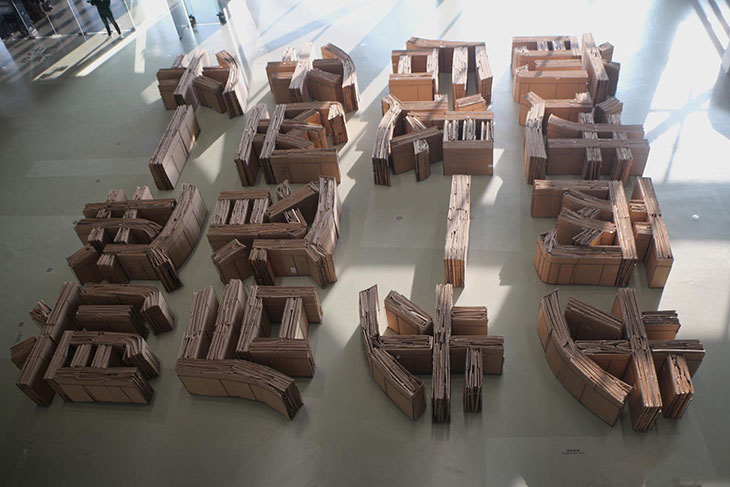
In Hemmed-in Ground (2018), Enrique Ježik. Installation view at 12th Shanghai Biennale, 2018. Photo: the author
Nearby is Enrique Ježik’s In Hemmed-in Ground (2018), an arrangement of cages, crammed with folded cardboard. It is clear that they form Chinese characters, but these are difficult to read from ground level. A high vantage point is required to decode the message that translates as ‘one step forward two steps back’.
Overlooking these words is a white podium, accessed by a staircase – an element of UuDam Tran Nguyen’s TIME BOOMERANG: From S.E.A. Sea Atolls to the Next Dead Stars (2013–ongoing). It was used at the exhibition opening as a platform from which participants would drop plaster bas-reliefs, derived from ancient and modern representations of world order, now smashing to the floor.
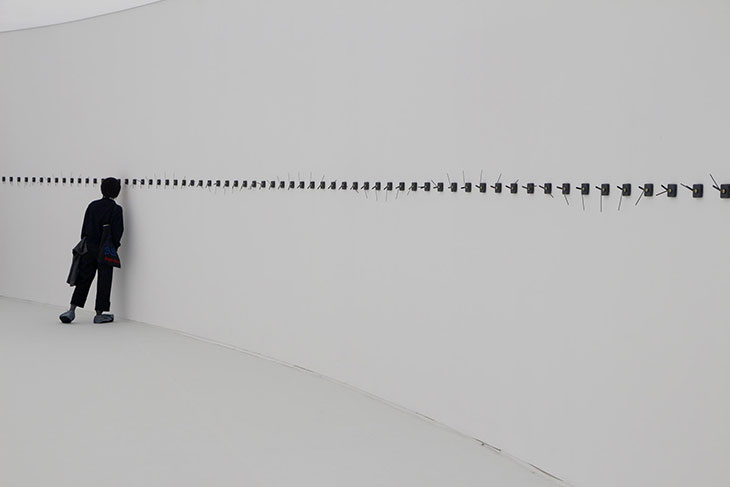
Clockwise (2016), Cristina Lucas. Installation view at 12th Shanghai Biennale, 2018. Photo: the author
It’s easy to spot themes of fragmentation and dysfunction throughout. Cristina Lucas’s Clockwise (2016) is a sequence of 360 ticking clock mechanisms, their hands fixed at four-minute intervals and hung in row lining a white, oval room. The exhibit turns the messiness of different time zones into a chic abstraction. Francis Alÿs’ deadpan video Rehearsal I (1999–2004) shows a clapped-out VW Beatle attempting to power up a steep incline only to roll back and try again, never succeeding to reach the crest of the hill and move on. The car’s efforts are accompanied by the sound of a wind ensemble rehearsal. As the vehicle hesitates on the hill the players lose cohesion, a conductor calls them together, and they too have another go.
In a number of other video works, the relationship between animal and human nature is explored. In Jennifer Allora and Guillermo Calzadilla’s three-channel The Great Silence (2014), parrots share the jungle with two vast radio telescopes searching for extra-terrestrial intelligence. In an imagined dialogue communicated through subtitles, the parrots wonder why the humans look so far away but are uninterested in the cognitive abilities of bird species close by. In Arin Rungjang’s Shooting an Elephant and The Leader (2018) the elephant huffs and grunts, rolling on the floor, faded black-and-white footage alternating with projected texts on the vicissitudes of colonialism.

Si So Me (detail; 2017–18), Zhang Xu Zhan. Photo: the author
Dotted around the periphery of the exhibition, part of Zhang Xu Zhan’s It’s very noisy here but I have nowhere to go – Mirror series (2018), are what look like dehydrated rats, encamped on the floor accompanied by a mirror. Rodents can also be seen in a funeral procession in Zhang’s stop motion animation film Si So Me (2017–18). Together with the rest of the Biennale’s cast of old cars, old statues and strange animals, these creatures belong to an ambivalent world rarely glimpsed beneath the relentless optimism of Shanghai’s public face.
‘Proregress’, the 12th Shanghai Biennale, is at the Power Station of Art, Shanghai, until 10 March.
Unlimited access from just $16 every 3 months
Subscribe to get unlimited and exclusive access to the top art stories, interviews and exhibition reviews.


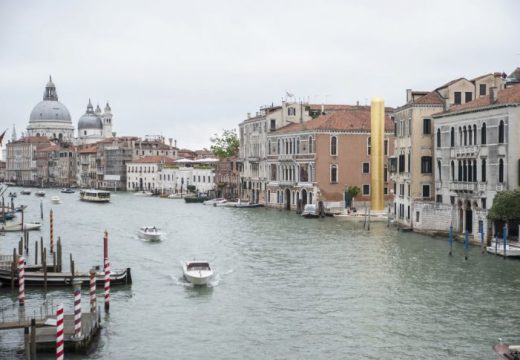
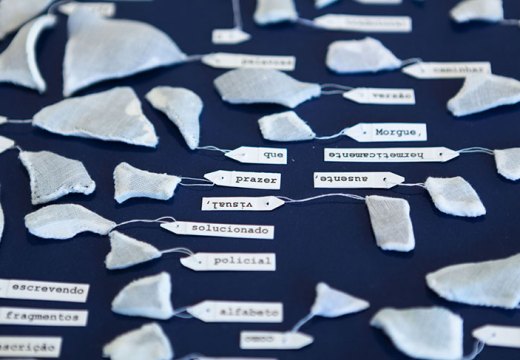
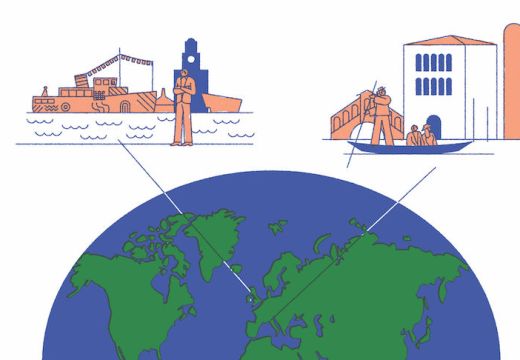









![Masterpiece [Re]discovery 2022. Photo: Ben Fisher Photography, courtesy of Masterpiece London](http://www.apollo-magazine.com/wp-content/uploads/2022/07/MPL2022_4263.jpg)
It’s time for the government of London to return to its rightful home